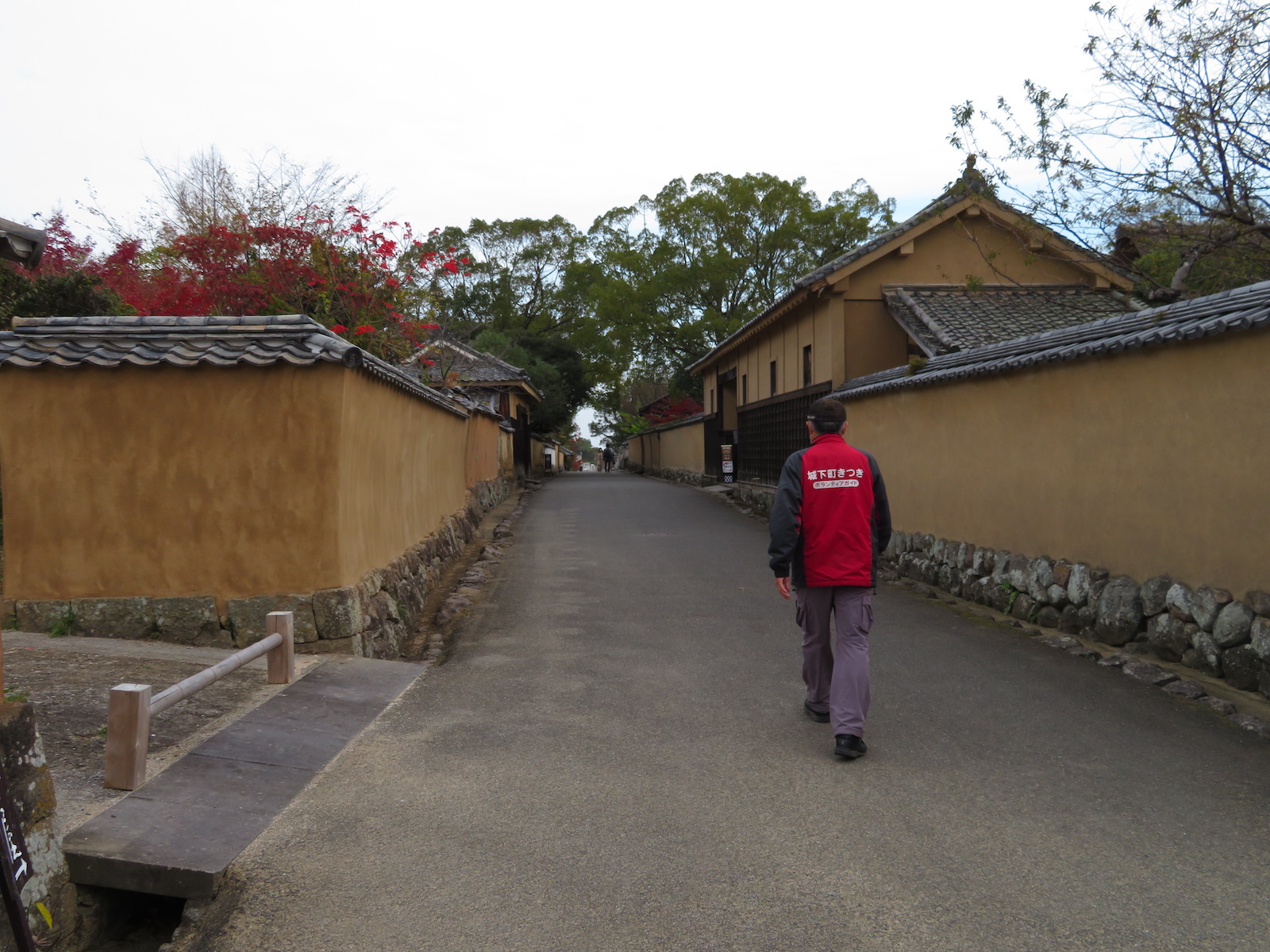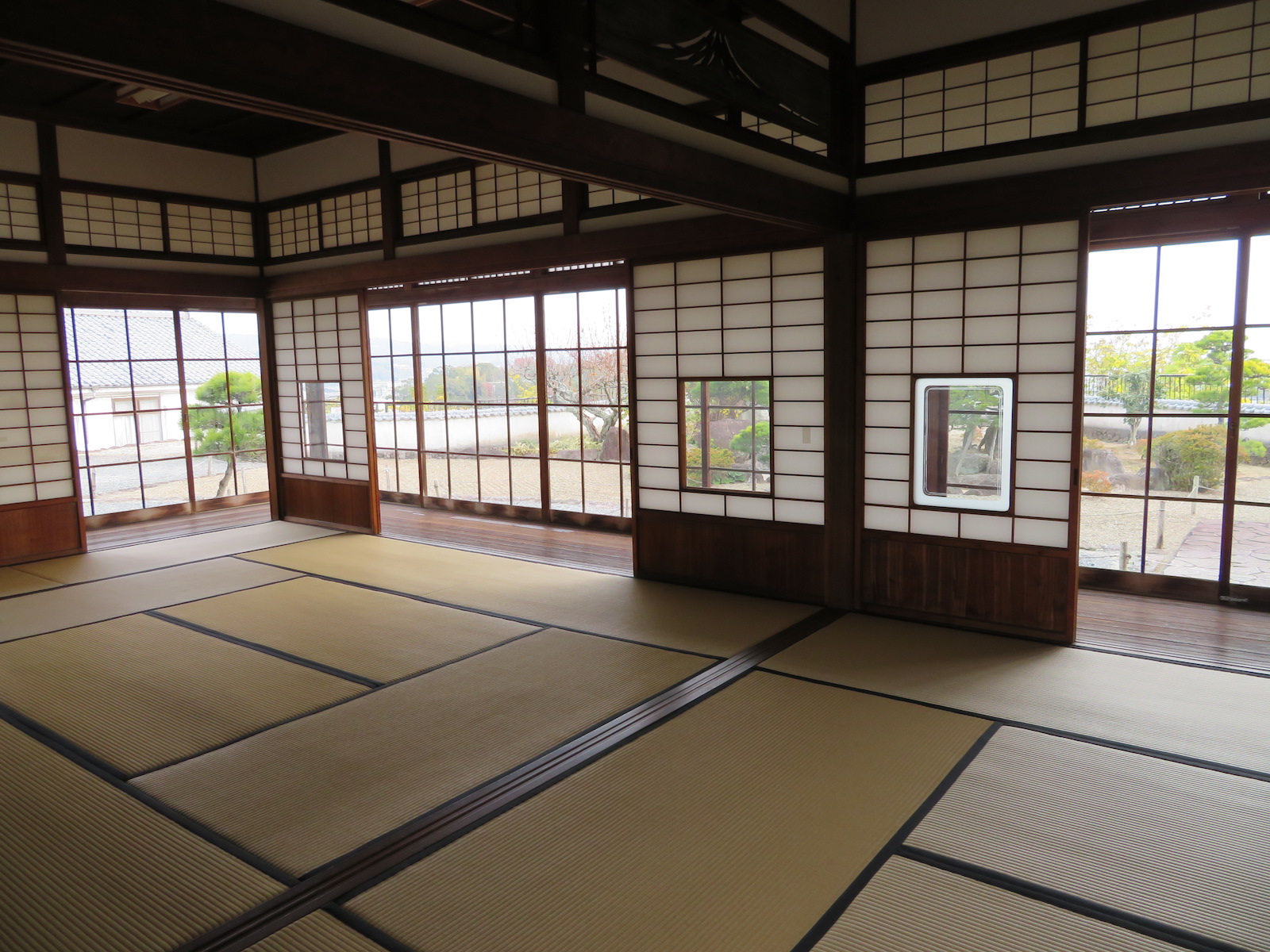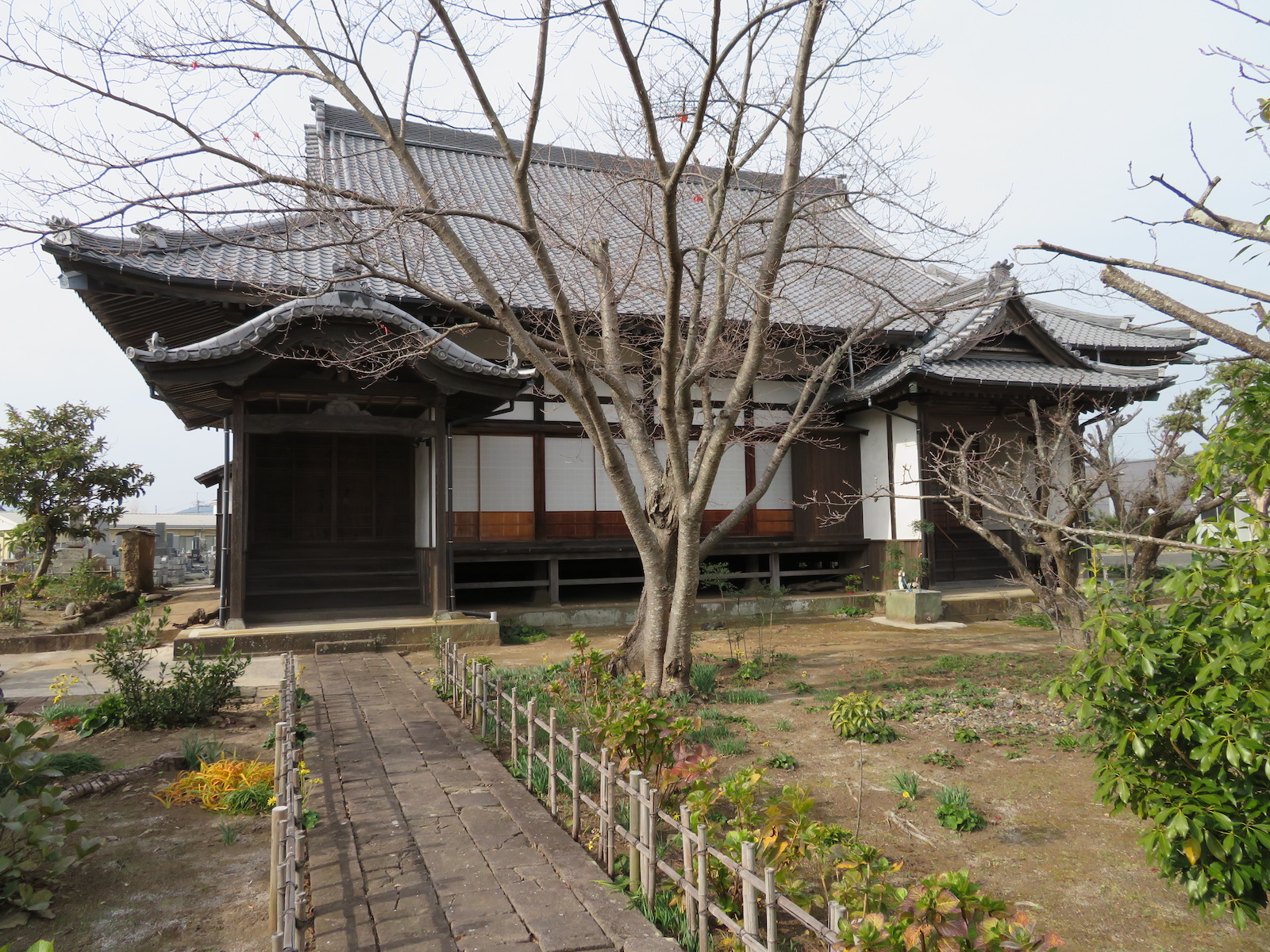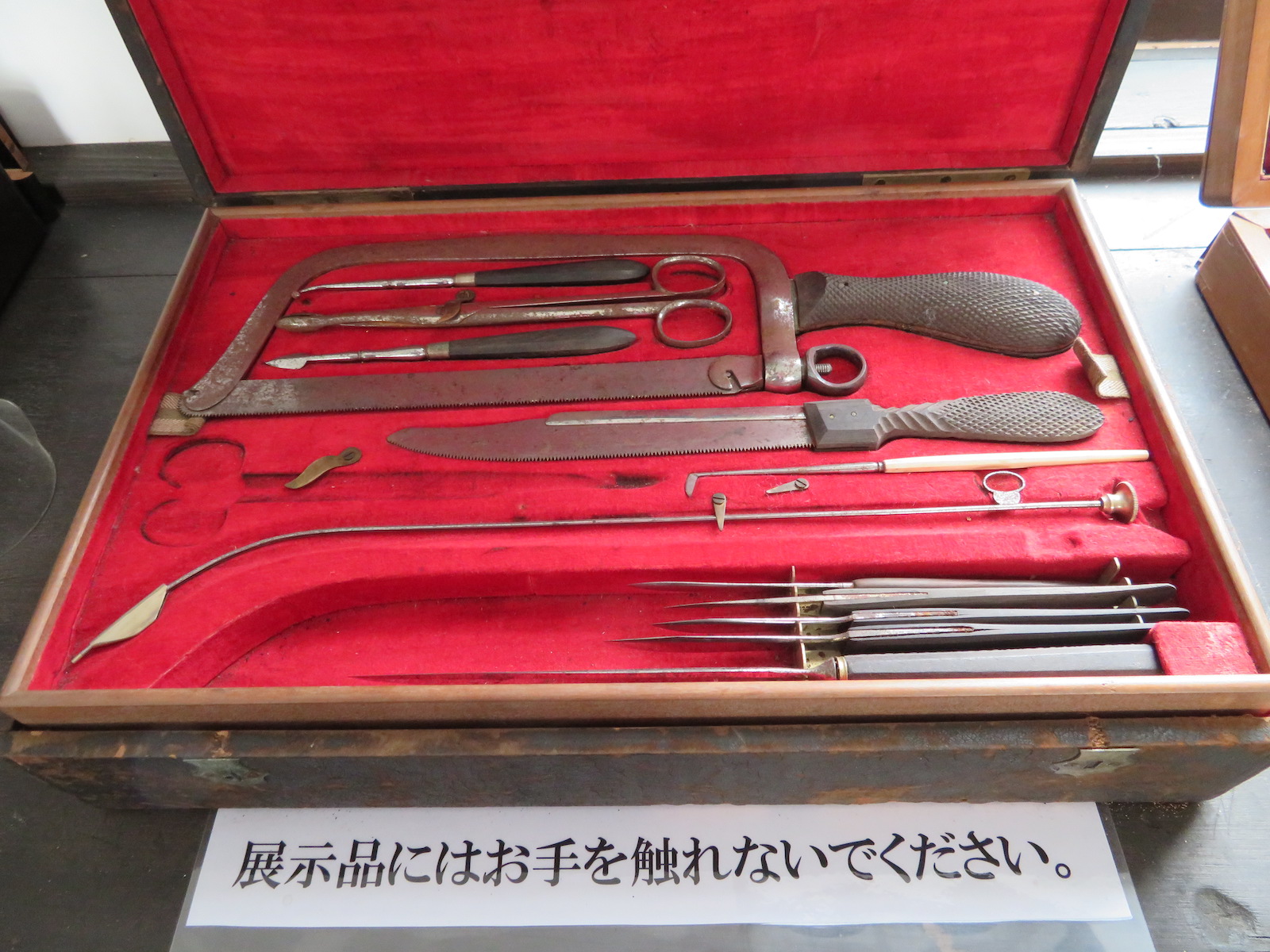Especially during Japan’s Warring States Period (1467-1615), castles were built across the country. Some were built in strategic locations to garrison troops and halt enemy advances. Subsequently, communities developed around them of merchants, artisans and others, often becoming major cities. In other cases, the city already existed and the castle was built as an administrative center, and a last bastion in case of enemy attack. Each of these castle towns (known as jokamachi) has its own unique history and distinctive features.
Kitsuki Castle sits on a promontory between the mouths of the Yasaka and Takayama rivers where the rivers flow into Morie Bay. This position is all the more strategic because it also watches over Hoyo Strait, the body of water that separates the islands of Kyushu and Shikoku at the spot where the Seto Inland Sea joins the Pacific Ocean. The first castle was built here in 1394.
More than six centuries later, modern Kitsuki has retained its roots as a castle town. It still has a castle on the bluff, old samurai residences, guardian temples and even a merchant district retaining Edo Period features. Located just 30 minutes from Oita Airport, visitors can stroll the town in kimono and imagine themselves centuries back in time.
The topography of the old town between the two rivers is hilly, preventing the rivers from joining. These hills are part of what makes Kitsuki such a distinctive place to visit. Samurai residences and temples are situated on the hills, with the castle sitting high above the top of the bay. The commercial district sits in a valley between the hills, still boasting many traditional shops.
A good place to begin a visit is the tourist information office around the corner from the bus terminal. Even if you arrive by car, it works well to park here and walk around the town. Use the free wifi to download a multilingual audio guide to let your smartphone be your guide.
In addition to picking up maps and information, you can also purchase a combination ticket (1,200 yen) that provides discounted admission to the city’s major historical sites detailed below. Note that entrance to many sites is free if you are dressed in a kimono (rentals available on weekends from a shop in the commercial district called Warakuan).
Kitsuki Castle
In spite of the castle’s long history, the current keep is a 1970 reconstruction. Before that the stone foundations sat empty after a lightning strike destroyed the original keep in 1608. Although the keep is now a ferro-concrete structure, the dimensions of its wedding cake construction match those of the original. The bottom level is 16.3 meters by 12.7 meters, while the length of each side of the second level is 3.6 meters shorter and the length of each side of the third level is 3.6 meters shorter again. The result is an attractive, if petite, castle; the smallest in Japan.

There are displays of armor and other samurai accoutrements inside the castle, but the real reason to visit is the views from the top floor. One can really appreciate the watchtower role of the castle, with views up the Yasaka river and out to sea. It is said that on a clear day, one can see Shikoku, some 40 kilometers to the south-southwest. (Open daily 9:30 to 17:00)
Samurai District
Less than 200 meters from the bridge that marks the entrance to the castle’s precincts at the bottom of its hill is the base of a shallow flight of stone stairs marking the beginning of the Kitadai Bukeyashiki (northern samurai residences). Three well-preserved houses along the top of the hill are open to visitors: Isoya House, Noumi House and Ohara House. While they all have certain common features, each has sufficiently distinctive features to warrant thorough exploration. All are open daily 9:30 to 17:00.

The entire laneway is lined with traditional walls and traditional gates leading to the houses. The area has been carefully maintained and, unusually for Japan, there is not an electrical wire to be seen, making it a popular location for samurai films. On the opposite side of the laneway is Kitsuki Elementary School. This site was once a “clan school” for the sons of samurai families. Inside a traditional gate in the wall there are still a few small structures with displays about this history and what the boys were taught.

At a small crossroads, turn left and head south, down the hill, to reach the commercial district and beyond.
Commercial District
Although the commercial district runs a long distance along this valley, just check out this part of it now and visit the western end later on your walk. There are a few modern storefronts, but most have preserved the whitewash and natural wood look of the Edo Period. Look especially for the Ayabe Miso Plant, where you can get freshly made miso and other seasonings. The merchants of Kitsuki have a long-standing reputation for their friendliness and good service.
When you’ve finished, continue south by ascending the stairs. On the left, about 100 meters up, is a gate leading to a cobblestone path to the Kitsuki Castle Town Historical Museum. Visitors are greeted by an elaborate Heian-style carriage, used during Kitsuki’s annual Tenjin Festival (July 25). The museum also has displays on the history and development of Kitsuki as a castle town and transportation hub. (Open 9:30 to 17:00 Thursday through Tuesday)

Just above the museum sits Hitotsumatsu House, formerly the home of Hitotsumatsu Sadayoshi, a local lawyer/politician and the first honorary citizen of Kitsuki. The house was built between 1927 and 1929 and is a fine example of an early 20th century traditional Japanese residence, meaning it still includes many features that would have been familiar to the samurai who lived on the opposite hill. Reflecting Hitotsumatsu’s prominent role in the community, the house had spacious, well-appointed rooms for entertainment as well as a separate family living area toward the back. Open daily 9:30 to 17:00.

Temple District (Tera-machi)
There is a straight road leading west from Hitotsumatsu House to Kitsuki’s Tera-machi. Although this area was also once filled with homes for samurai, it is now a regular residential area, although many homeowners have retained traditional style walls. The temples were placed on what was once the western edge of the town as a protective barrier.
Choshoji, closest to the river, is famous for its traditional garden, while Shokakuji, further up the hill, is home to a large (and somewhat rusty) iron statue of a seated Buddha. Next door, at the top of the hill, is Yotokuji, the family temple of the lords of Kitsuki Castle during the Edo Period. One interesting feature here is the separate entrances for samurai and others.

After visiting the temples, return to the commercial district to explore a bit further. Be sure to visit Tomaya, Kitsuki’s most famous tea shop. The current shop was built in 1875, although the family has been in the tea business for at least a couple centuries longer. The shop sells local tea leaves and various modern tea accessories, but the shop also has displays of historical tea-related memorabilia as well as a tatami room for traditional tea ceremony.

Dr Sano’s House
If you’re visiting between Friday and Monday, make one more stop on the north hill above the commercial district: Dr Sano’s House.
Fourteen generations of Sano men have been medical practitioners. Visitors can see how the home was used as a medical clinic with its tatami waiting room, an x-ray machine from the 1960s, and various other items of vintage and antique medical equipment.

Wandering the streets of Kitsuki’s historical district gives a much deeper insight into life in a castle town. One soon realizes a castle town is much more than just its castle.
Vicki L Beyer, a regular Japan Today contributor, is a freelance travel writer who also blogs about experiencing Japan. Follow her blog at jigsaw-japan.com
© Japan Today Take our user survey and make your voice heard.
Take our user survey and make your voice heard.















3 Comments
Login to comment
Speed
The Oita coastline there is really pretty. South of Beppu too.
nandakandamanda
Looks like a great place to visit.
rainyday
This is a nice write up about the town, kind of makes me want to visit or even buy a house there someday. I used to live in Kyushu and have fond memories of visiting little towns like that (though I've never been to Kitsuki).